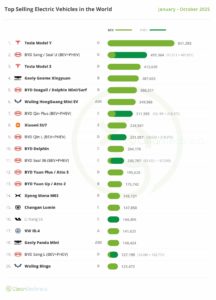Iceland offers the most affordable charging
Iceland tops the list as the cheapest place in Europe to charge an electric car, with an average rate of just €2,9 per 100 kilometers at a public fast-charging station. The country’s abundant geothermal and hydropower resources play a big role in keeping these costs low. With such a strong renewable energy base, Iceland can provide cheap electricity not only for homes but also for EV charging, making it a particularly attractive place for EV owners.
Though Iceland’s market for electric vehicles is relatively small, EVs have become a common sight on the streets of Reykjavik. The combination of affordability and an eco-conscious population has spurred the adoption of EVs in the country. Drivers in Iceland benefit from both cheap fuel and the satisfaction of knowing their vehicles are powered by clean energy.
Portugal and Finland: Other low-cost options
Close behind Iceland is Portugal, where charging an EV costs about €3,2 per 100 kilometers. Portugal’s efforts to invest in renewable energy—especially wind and solar—have paid off, making it one of the most affordable places to keep an electric car running. The country has also expanded its EV charging network in recent years, providing better access to charging stations at reasonable prices.
Finland ranks third in affordability, with an average charging cost of €4,6 per 100 kilometers. Thanks to a mix of nuclear power and renewable energy, Finland maintains relatively stable electricity prices. This stability extends to the costs of public EV charging, making Finland another budget-friendly option for electric vehicle drivers.
Norway: The most expensive place to charge
On the opposite end of the spectrum, Norway stands as the most expensive place in Europe to charge an EV, with costs reaching €18,9 per 100 kilometers. That’s more than six times what drivers pay in Iceland. Despite Norway’s reputation as a leader in renewable energy—most of its power comes from hydropower—charging costs are high due to several factors. Taxes and network fees significantly inflate the price of electricity, and Norway’s generally high cost of living contributes to these elevated rates.
It’s a curious situation, considering that Norway is also a global leader in EV adoption. In 2023, more than 80% of new cars sold in the country were electric. Norway’s well-developed network of public charging stations makes it convenient to drive electric, but it comes at a price.
Slovenia and Estonia: High-cost charging continues
Not far behind Norway, Slovenia is the second most expensive country in Europe for charging an EV, with an average cost of €17,0 per 100 kilometers. Slovenia faces higher energy costs, in part because it relies more heavily on imported energy than some of its neighbors. With fewer renewable resources available domestically, the country’s charging prices reflect its higher electricity expenses.
Estonia is another relatively expensive place to charge, with costs of about €10 per 100 kilometers. Like Slovenia, Estonia’s charging prices are shaped by its energy imports and developing infrastructure. While the country has made strides toward incorporating more sustainable energy sources, it hasn’t yet achieved the stability in pricing seen in countries like Finland.
A mixed picture across Europe
Across Europe, the costs of charging EVs show a wide range of variation. The differences often reflect the energy sources, policies, and economic conditions unique to each country. In Southern Europe, for example, Portugal is joined by Spain with relatively low prices—charging in Spain averages around €7,1 per 100 kilometers. However, other southern countries like Greece, Cyprus, and Malta have rates closer to €9,8 per 100 kilometers, reflecting a greater dependence on energy imports.
In Western Europe, charging costs are generally around the European average. In France, EV drivers can expect to pay about €7,3 per 100 kilometers, while in Germany, it’s closer to €8,9. Germany’s costs have been influenced by its transition from coal and nuclear power to renewable energy sources. This shift has required significant investment, which has been reflected in electricity prices, including those for EV charging.
Eastern Europe shows more mixed results. Poland, at €6,7 per 100 kilometers, and Hungary, at €5,8, offer some of the lower rates, partly due to competitive energy markets. Meanwhile, Slovakia’s average of €6,4 per 100 kilometers reflects a balance between investment in infrastructure and maintaining affordability for drivers.
What drives the differences in charging costs?
Several key factors explain why EV charging prices vary so much across Europe. In countries like Iceland and Portugal, access to renewable energy is a major advantage. Generating electricity from geothermal, wind, or solar power often results in lower production costs, which can then be passed on to EV drivers.
On the other hand, countries like Norway, Slovenia, and Germany have higher taxes and grid fees, which contribute to the elevated costs of public charging. Even with a strong focus on renewable energy, these additional expenses can make EV charging less affordable.
Infrastructure also plays a critical role. Countries like the Netherlands, with over 154.000 public charging points, have invested heavily in their EV networks. While this investment supports a growing number of EV users, it also adds to the overall cost of using public charging stations. Germany and France, each with over 125.000 charging points, follow a similar pattern, balancing widespread access with the costs of maintaining such extensive networks.
The role of EV adoption and infrastructure
Europe is home to some of the world’s most developed EV markets. Norway’s leadership in EV adoption is well known, even though charging costs remain high. The Netherlands stands out with its dense network of public charging stations, making it one of the easiest places to drive an EV despite moderate charging prices. Germany, with its large automotive industry, and France, with its focus on environmental policies, have also made significant strides in expanding their EV infrastructure.
Smaller markets like Iceland demonstrate how a focus on renewable energy can keep costs down, even if the overall network is not as large. As more European countries ramp up their renewable energy production and expand EV infrastructure, the landscape of EV charging costs could become more uniform.
Looking ahead: The future of EV charging costs in Europe
As Europe continues to shift towards electric vehicles, the cost of charging will remain a crucial consideration for drivers. Countries like Iceland and Portugal highlight what’s possible when renewable energy is abundant and electricity prices are kept low. On the other hand, high-cost countries like Norway and Slovenia reveal the challenges of managing taxes, network fees, and infrastructure investment.
Looking forward, there’s potential for charging prices to become more consistent across the continent. Efforts to boost renewable energy, improve grid efficiency, and develop more charging infrastructure could help bring costs down. For now, though, the cost of charging an EV varies widely, shaped by each country’s unique mix of energy resources, policies, and economic conditions.
Sources: Visual capitalist, EAFO, Euronews







